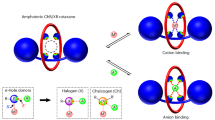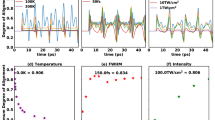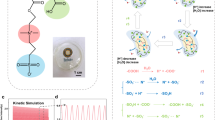Abstract
EIGHTY-EIGHT years ago, Biot (Comptes rendus, 1836, 2, 542) showed that an anomalous rotatory dispersion could be produced by superposing two normal partial rotations of opposite sign and of unequal dispersion. This general theory of the origin of anomalous rotatory dispersion can be developed in two ways, according as it is supposed that a partial rotation of opposite sign is produced as the result of a chemical change in the optically-active molecule, or that the presence of two opposite partial rotations is one of its inherent physical properties. In the Bakerian lecture of 1921 (Phil. Trans., 1922, A, 222, pp. 249-308) we adopted, for the case of tartaric acid, the former explanation.1 This was in harmony with the conceptions of Biot himself, since he attributed the variations in the rotatory power., of this acid, e.g. in aqueous solutions, to chemical and not to physical causes; this point of view had also been stated in a very precise form by Arndtsen in 1858 (Ann. Chem. Phys., 1858, 54, p. 421). The same explanation has since been adopted by Astbury (Proc. Roy. Soc, 1923, A, 718, p. 527; NATURE, July 26, p. 122) as a sequel to his X-ray examination of the crystals, and by Long-chambon (Comptes rendus, 1924, 178, p. 951) as a result of his study of their optical rotatory power. There is therefore a strong consensus of opinion amongst all those who have recently worked on the subject, that the anomalous rotatory dispersion of tartaric acid is related very intimately to its ability to undergo a reversible chemical change.
This is a preview of subscription content, access via your institution
Access options
Subscribe to this journal
Receive 51 print issues and online access
$199.00 per year
only $3.90 per issue
Buy this article
- Purchase on SpringerLink
- Instant access to full article PDF
Prices may be subject to local taxes which are calculated during checkout
Similar content being viewed by others
Rights and permissions
About this article
Cite this article
LOWRY, T., AUSTIN, P. The Rotatory Dispersion of Tartaric Acid. Nature 114, 430–431 (1924). https://doi.org/10.1038/114430a0
Issue date:
DOI: https://doi.org/10.1038/114430a0



